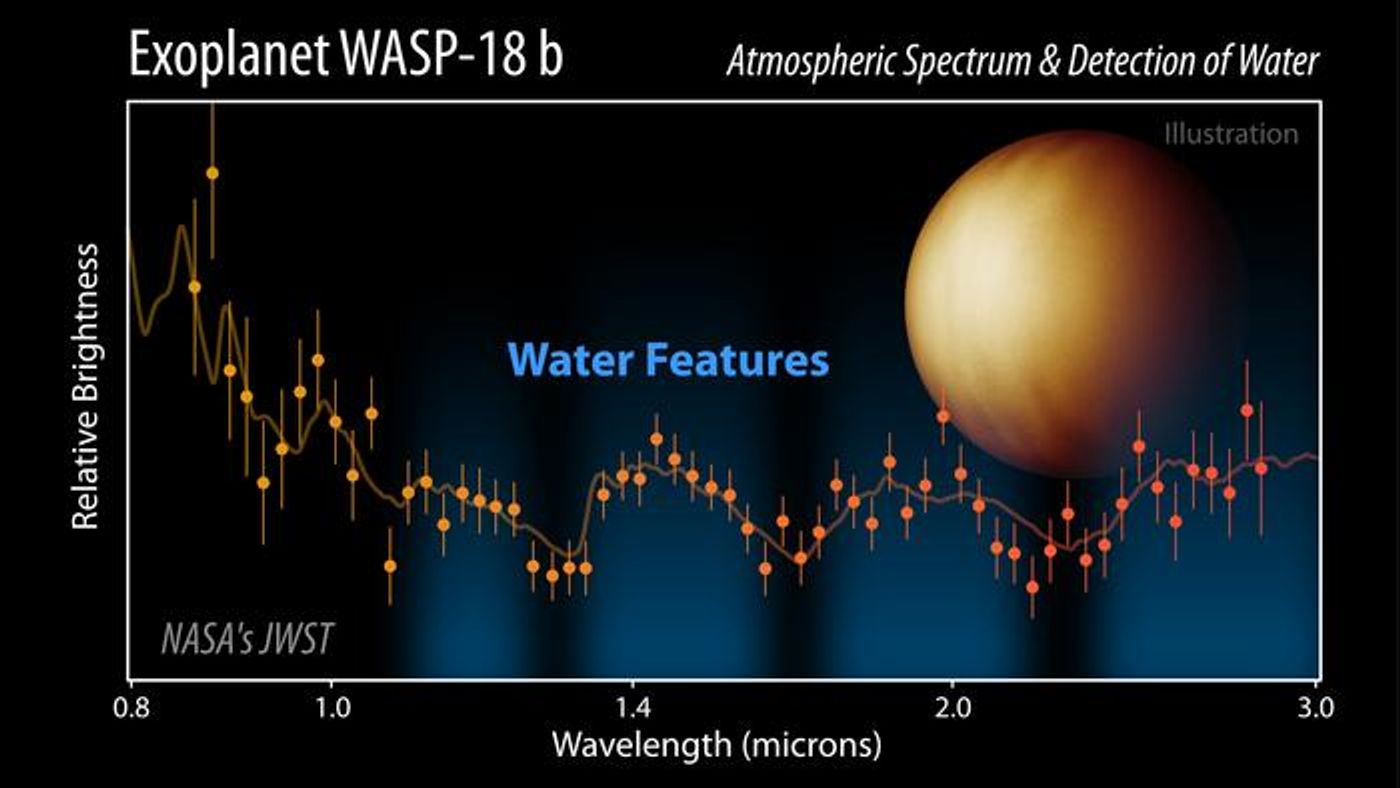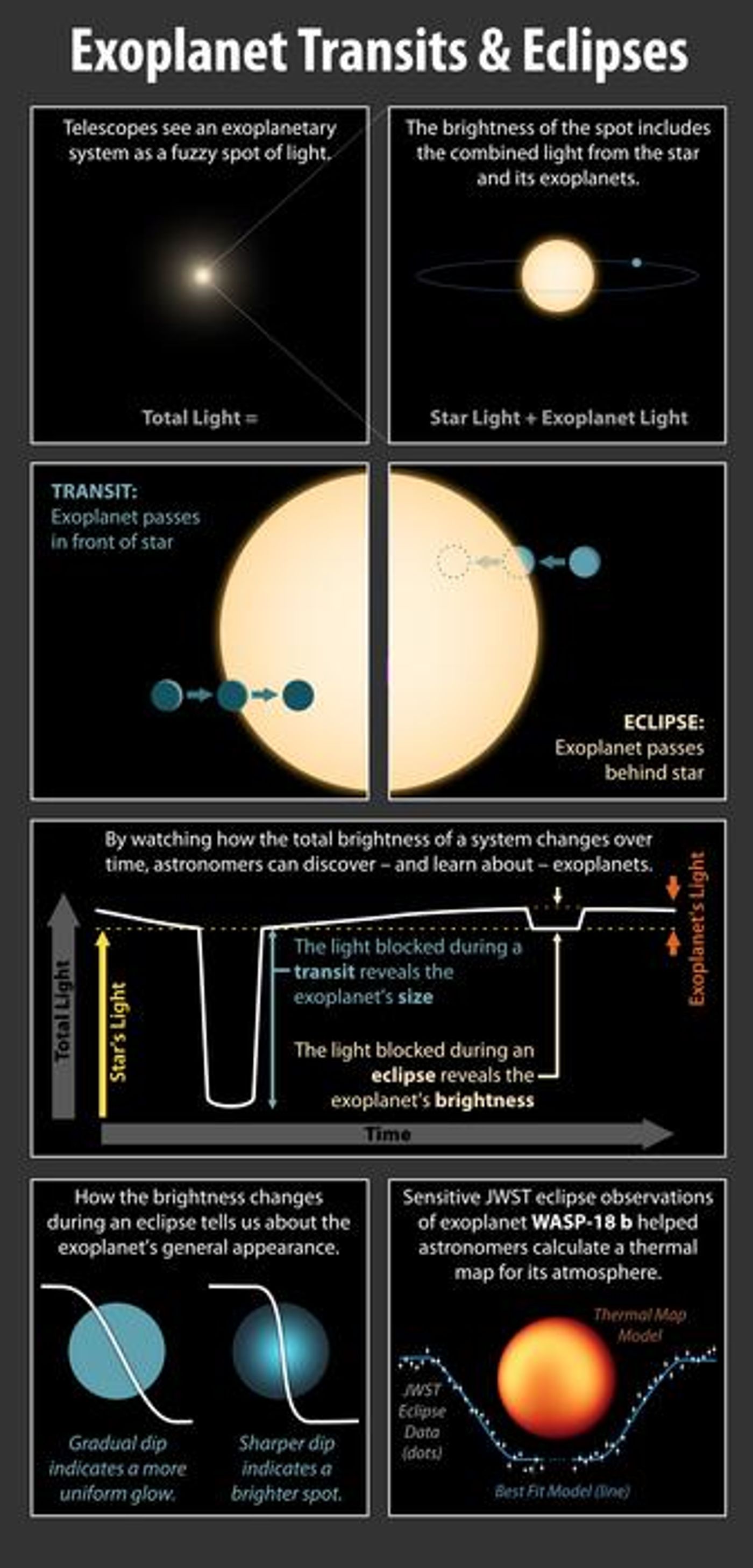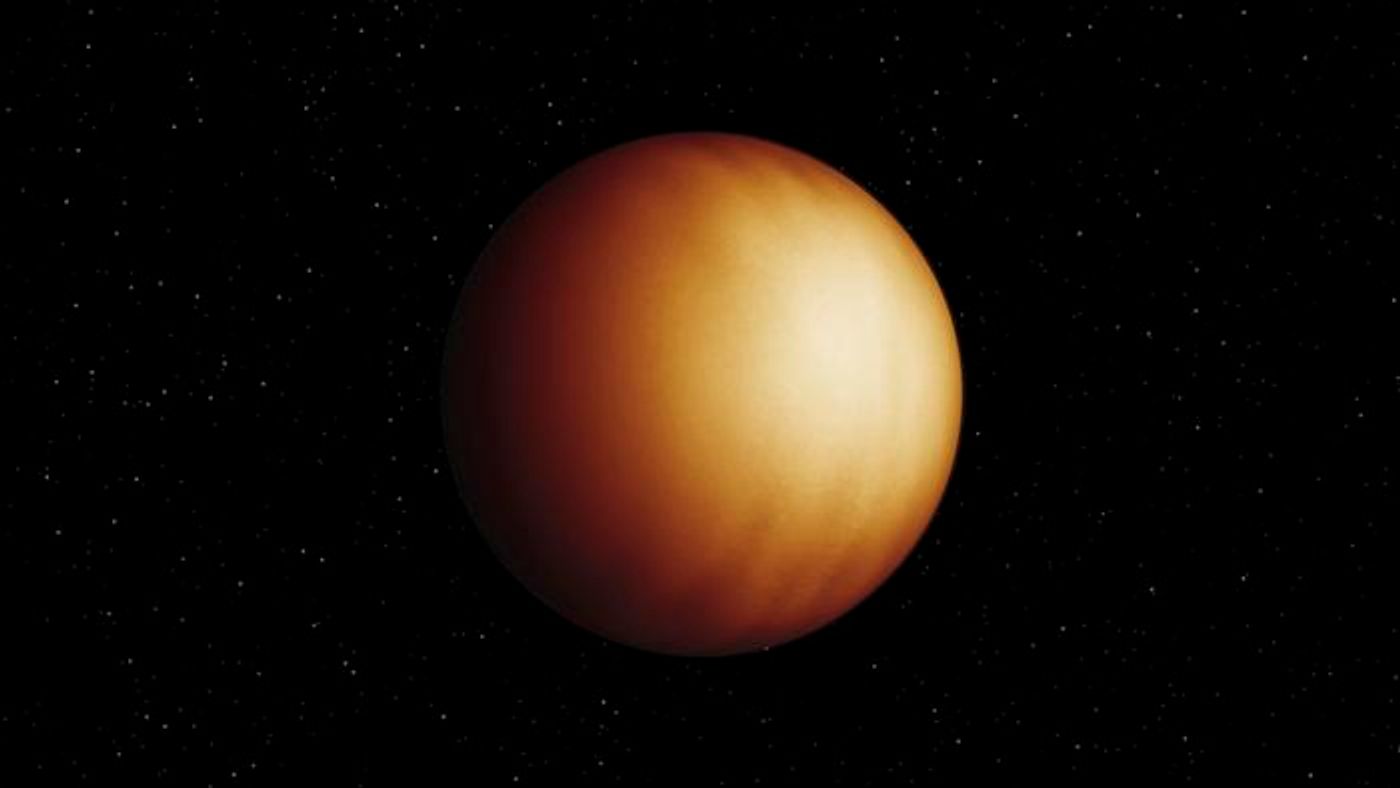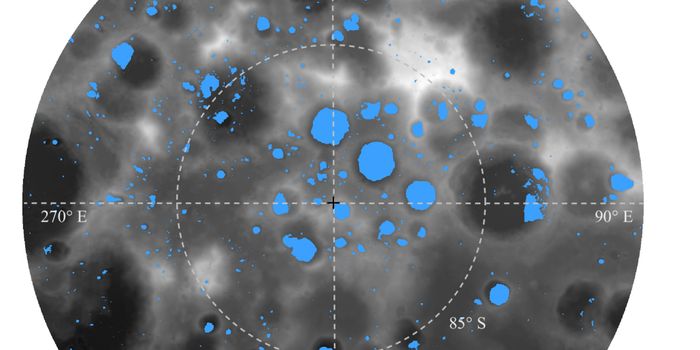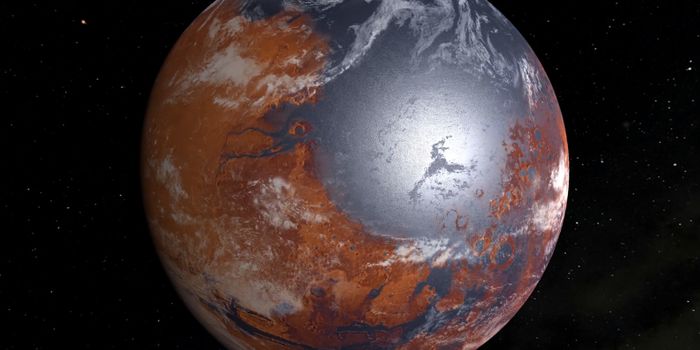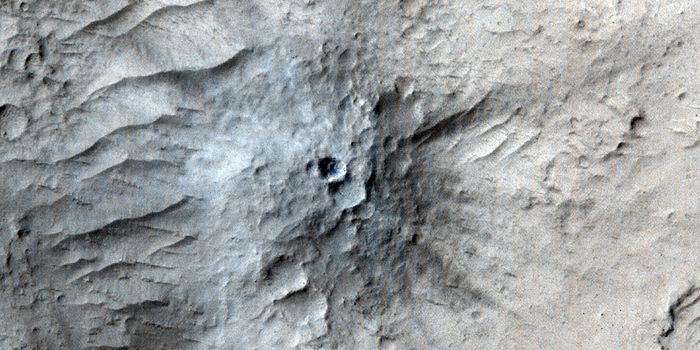Webb Telescope Identifies Water Vapor Traces in Ultra-Hot Jupiter's Atmosphere
A recent study published in Nature examines how NASA’s James Webb Space Telescope (JWST) has identified water vapor in the atmosphere of an ultra-hot Jupiter located 400 light-years from Earth. This remarkable discovery was conducted on WASP-18 b, which was discovered in 2009, and holds the potential to help scientists better understand the formation and evolution of such large exoplanets. In this case, WASP-18 b is approximately 10 times as massive as Jupiter.
WASP-18 b atmospheric data collected by JWST's NIRISS instrument. (Credit: NASA/JPL-Caltech (R. Hurt/IPAC))
For the study, the researchers used the Canadian Near-Infrared Imager and Slitless Spectrograph (NIRISS) instrument on JWST to analyze the exoplanet’s atmosphere as it passed behind its parent star, known as a secondary eclipse, which happens frequently since its orbital period is only 23 hours (as opposed to 365 days on Earth). When this happens, astronomers can analyze the combined light from the exoplanet and star, then isolate the appropriate measurements to produce a temperature map of the exoplanet. This process was made easier due to WASP-18 b being tidally locked with its parent star, meaning one side always faces its star, much like Earth’s Moon always has one side always facing the Earth.
‘‘JWST is giving us the sensitivity to make much more detailed maps of hot giant planets like WASP-18 b than ever before,” said Dr. Megan Mansfield, who is a Sagan Fellow at the University of Arizona, and a co-author on the study. “This is the first time a planet has been mapped with JWST, and it’s really exciting to see that some of what our models predicted, such as a sharp drop in temperature away from the point on the planet directly facing the star, is actually seen in the data!’’
Infographic explaining how astronomers study exoplanets and their atmospheres. (Credit: NASA/JPL-Caltech/R. Hurt)
The team was able to observe WASP-18 b for approximately six hours with the NIRISS instrument, and upon analyzing the data detected traces of water within the exoplanet’s atmosphere, despite the atmospheric temperature being a scorching 4900 degrees Fahrenheit (2700 degrees Celsius). Finding even the smallest traces of water in such a hot atmosphere is remarkable given those temperatures can tear apart water molecules, so this speaks volumes to the sensitivity of JWST’s instruments.
The key parameter that allowed astronomers to examine WASP-18 b was proximity, not only to Earth (400 light-years), but also how close WASP-18 b is to its star. Also, the mass of WASP-18 b makes its atmosphere much easier to examine, as well.
Artist illustration of WASP-18 b, which is about 10 times as massive as Jupiter, located ~400 light-years from Earth, and orbits its star in 23 hours. (Credit: NASA/JPL-Caltech/K. Miller/IPAC)
‘‘By analyzing WASP-18 b’s spectrum, we not only learn about the various molecules that can be found in its atmosphere but also about the way it formed. We find from our observations that WASP-18 b’s composition is very similar to that of its star, meaning it most likely formed from the leftover gas that was present just after the star was born,’’ said Louis-Philippe Coulombe, who is a PhD student at Université de Montréal, and lead author of the study. ‘‘Those results are very valuable to get a clear picture of how strange planets like WASP-18 b, which have no counterpart in our Solar System, come to exist.’’
What new discoveries will astronomers make about the atmospheres of WASP-18 b and other exoplanets in the coming years and decades? Only time will tell, and this is why we science!
Sources: Nature, EurekAlert!
As always, keep doing science & keep looking up!
